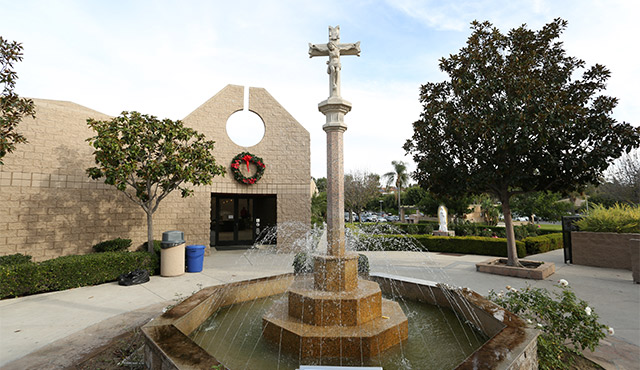May I offer a special point of Lenten reflection apart from the traditions of prayer, fasting and almsgiving: the stational churches, which can certainly lead us to greater prayer with the entire Church in this season. In the early centuries of the life of the Church we know that public worship was not always possible because of persecution. After Christianity was tolerated or recognized as a religion by the Roman emperor, Christians were able to worship publicly. They often gathered in homes or Roman basilicas that had been turned into sites of Christian worship. These become known as “stational” or stopping places for worship, especially during the season of Lent as it grew and developed. These places became especially important when the Bishop of Rome gathered with the early Christians in these sacred places, eventually for the entire season of Lent. Worshippers walked to the stational, and one can find the list of the stational churches in the missal prior to the Second Vatican Council. The place where a stational Mass is celebrated is listed for each day of Lent. Lent in Rome became a place of daily walking in pilgrimage to early morning Mass, which involved prayer, fasting and almsgiving.
Like many customs that unfortunately fell into disuse in the late l960s and early l970s, the stational churches were forgotten by many, except for Santa Sabina on Ash Wednesday. That is the Dominican church on the Aventine Hill in Rome.
In the early 1980s, a revival of the stational churches occurred, due in large part to seminarians from the North American College in Rome. The priests and seminarians would gather around 5:30 a.m. or so outside of the seminary on the Gianiculum or the Casa Santa Maria and would walk (or take the bus) to these historical places of worship for Mass. I tried to do this each of the four years I was in Rome, and the stational church where I was the main celebrant was San Marcello on the Via del’ Corso, which is the Servite Church. One got the sense that one was indeed worshipping with the Christians of every time and place. The stational Masses have continued to grow in popularity.
If you are ever in Rome during Lent, I would recommend that you ask about the place of the stational Mass on the day that you visit. The Visitors Office of the North American College would be most helpful, as will an Internet search.
Either from a distance or in person, the stational Masses represent a living, historical and even “transcendent” way of living the Lenten call to penance and holiness, and of being “stationary” in the midst our own walk of life—to embrace or strengthen the call to holiness in our lives, and to leave sin and darkness behind.
Upcoming stational Masses in the Diocese of Orange take place March 2 at 7pm at Saint Joseph Church in Santa Ana and March 11 at 7pm at Santiago de Compostela Church in Lake Forest.
A version of this column originally ran in the issue of March 12, 2014.

